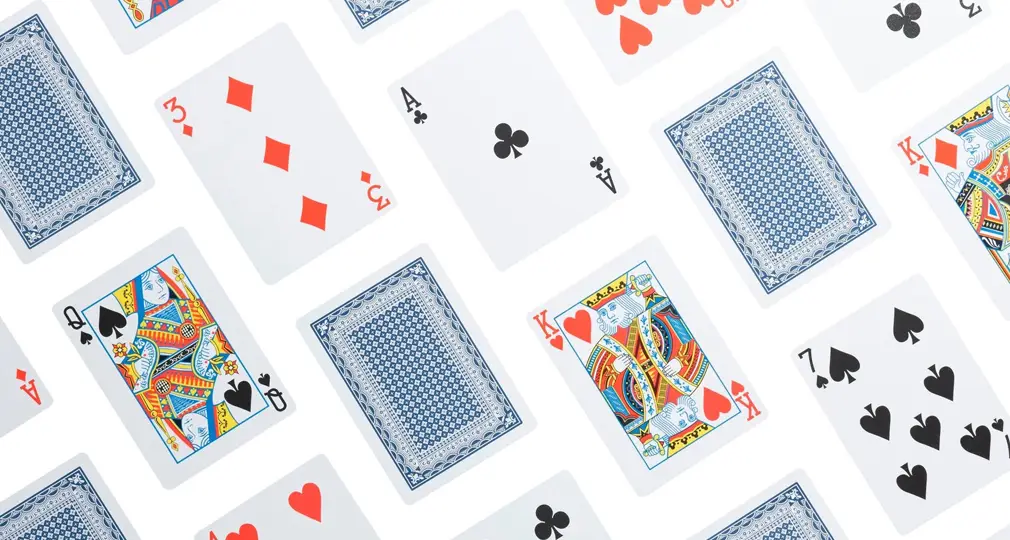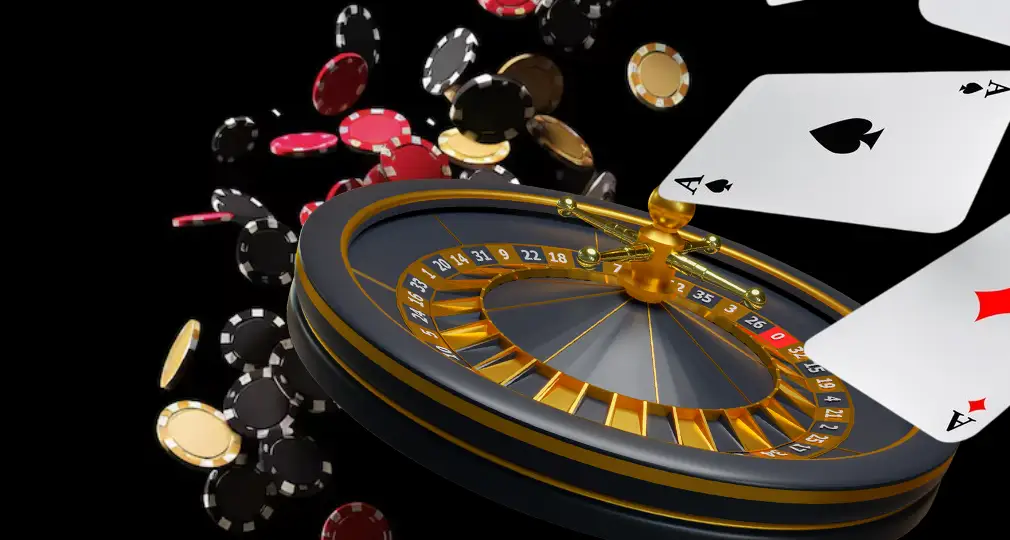The history of playing cards is long and enthralling. They underwent many mutations before we could see them in their current state. Dozens of legends and interesting stories surround all its parts: from images to suits.
It is always interesting to look at a playing card because it has many eye-catching elements. Especially, the kings, queens, jacks, and jokers. These characters are usually uniquely portrayed as each designer or artist credits them with individual sense and spirit. The same thing is applied to card suits. These small red and black marks contain much information and are essential for any casino game.
The suit of a card: general information
Suits are special symbols on any playing card which indicate what type a card belongs to. In other words, suits considerably simplify the gaming process because they help players not to get confused in cards variety. Usually, a traditional set of cards consists of fifty-four items: fifty-two standard cards which are frequently used and two additional cards – the jokers. There are four suits types in a deck. They are the following:
- hearts;
- spades;
- clubs;
- diamonds.
It is obvious that all cards fall into these categories. For instance, there are a queen of spades, or the ten of diamonds, or the king of clubs, etc. Within a game, suits can be divided into usual and trump. Trump suit has a higher value than other cards and fulfills an important function in a game. Moreover, some card games have set rules as for suits – a certain suit is permanently assigned as trump. The vivid example of such games is the spades game – judging from its name, the main suit here is spades.
Similar to card denomination ranks, suits can also be ranked. It is important to define the suit level in the bridge because it helps to set the right bidding sequence, and the bridge isn’t the only game where this principle is applied. As many other games also require this ranking, there are several unspoken rules used for suits positioning:
- Poker and bridge: spades, hearts, diamonds, clubs.
- The 99 game: clubs, hearts, spades, diamonds.
- Preferans’ order is the following: hearts, diamonds, clubs, spades.
- The 13 game has a descending order: hearts, diamonds, clubs, spades.
This usage isn’t the only possible variant. Card games differ a lot and suits are also involved in this process. For example, there is such a notion as suits pairing. It suggests the reverse meaning of suit: a card with a lower suit is considered to be more valuable than a card with a higher one. In addition to this, there is such a notion as the disregard of suits. In this case, the category is totally ignored by players. The major representatives of such games are canasta and blackjack. So, don’t be surprised when you meet strange rules while playing one of these games.
To cut a long story short, all suits can be paired by such parameters as rank, color, shape. Thus, if to consider color, diamonds group with hearts as they are of a common color (red), clubs group with spades, in their turn, because their color is black. As for the shape category, it includes two more subcategories – sharp and rounded. Spades and diamonds belong to sharp symbols, while clubs and hearts to rounded ones. All suits are divided into main and secondary. The main group consists of hearts and spades, the minor – of clubs and diamonds.
It is worth mentioning that some packs of cards have suits with four colors. It helps to define each suit better and simplifies some games. It looks like this: red hearts, black spades, green clubs, and blue diamonds. German set of cards also has the color palette distinguished from a standard version. For example, this nationality prefers to make spades green because they interpret them as leaves, and diamonds should be yellow, like bells.
There were many attempts to add more suits to a traditional 52-card set and it didn’t meet with success. Some cards enthusiasts wanted to introduce one or even two more suits to a classic deck but this decision didn’t find supporters. If to search for some historical facts, you will surely find the information about specially-designed poker cards with an additional suit.
Such card had five stars depicted on it and it was counted as the fifth suit. These packs are still manufactured in some countries, so the collectors of unusual decks can buy them.
However, it isn’t a single case of a modified classic deck. Gamblers often “play” with the order of cards suits, while manufacturers create a big variety of different packs. You can google many examples of five-, six- and even eleven-suit decks of cards. The prominent representatives of them are the following: Estate Cards, Nu-Dek Sextet Bridge, K6T, and many more.
The history of suits: cards’ origin and the evolution of symbols
The journey of card suits started in East Asia, namely in China. As popular at that time trick-taking games required more elements on cards to improve strategy, suits became very helpful while playing. These first cards became the base for the Latin system. At this initial stage, suits had symbols absolutely different from the modern ones. They were represented through the prism of money: coins, myriads/strings of coins, tens of myriads. Then playing cards came to the Islamic states and continued its evolution. Suits got new traits peculiar to this culture.
Later, cards appeared in Europe but they again had suits unfamiliar to us. Wands, swords, cups, and rings were the symbols used for suits. Their modern appearance originated somewhere in France in the fifteenth century.
Cultural differences in playing cards suits
According to the fact that almost every country which used cards made changes in suits, they were divided into many types. If to consider the Latin suits, they fall into several kinds: archaic, Spanish, Italian, Portuguese. It’s not hard to guess that they have distinctions mainly in their appearance. For instance, the Spanish sword symbol is straight. In the Northern Italian version, clubs are represented by batons. The differences are really small but they can tell players a lot about the country of a deck’s origin.
Meaning of cards suits: are they simple graphic elements or significant symbols?
The meaning of these nice-looking playing symbols is another topic to discuss. Researchers say that these signs have a common ground with the Tarot card system and many facts prove this. Suits have preserved many elements from their initial symbolism and, of course, there are many assumptions and legends about them.
Some scientists state that all suits represent Middle-Age society. Hearts were the signs of the spiritual part of the society of that time, such as priesthood. Spades meant war and brave soldiers who were ready to protect their lands against enemies. Diamonds represented the sphere of retail. They had the meaning of merchants’ activity. Clubs, in their turn, meant countrymen – poor people who were working around the clock. However, as it is already mentioned, suits differ by cultural characteristic and this hypothesis can’t be applied to all decks.
At the same time, bells in the German system have the same meaning as spades. Bells were often used in falconry and this kind of sport was the favorite one among the military and wealthy segment of people. Diamonds could be an indicator of the high society in the French system because stones with a diamond shape were widely applied in the aristocratic world.
Now you probably have a question: what about other signs that are used in a number of various card packs? Among them are acorns, shields, leaves, roses, shields, coins, and many more. What did they mean and what did the artist want to express by these symbols? They say that players shouldn’t seek for symbolism in these signs. Most of them are just beautiful images that don’t have much sense. They came from folklore directions and most likely didn’t have any interpretation.
Moreover, many decks of cards created centuries ago were designed by noble people of that time: lords, countesses and other rich fans of card games who dictated their rules. They asked craftsmen to create decks for them and implemented their preferences for card imagery. That is why there are big chances that all these symbols are just somebody’s desires.
The most popular questions about cards suits
How many suits are there in a deck of cards?
There are four suits in a widely-used deck of cards. However, there are a huge number of decks and suits variations around the globe.
What are the suits in cards?
They are the following: hearts/spades/clubs/diamonds.
Read more: Top Online Casino in Australia












